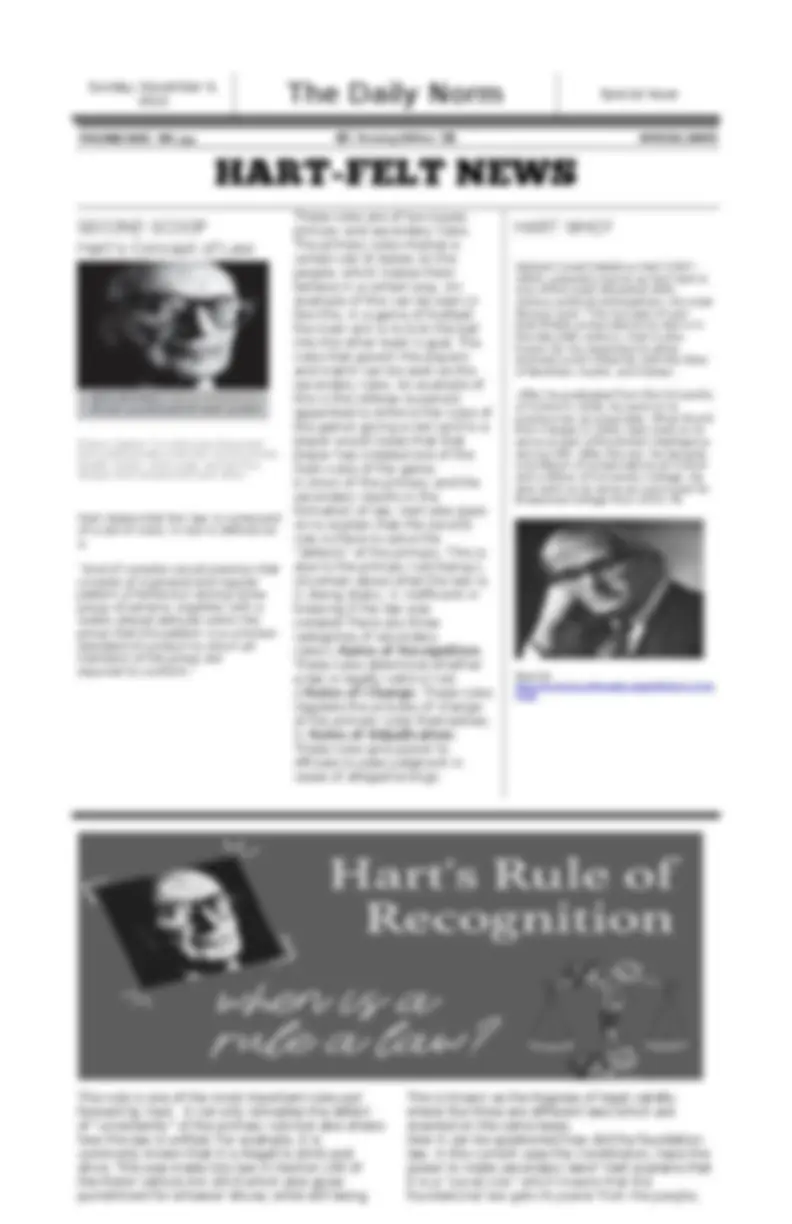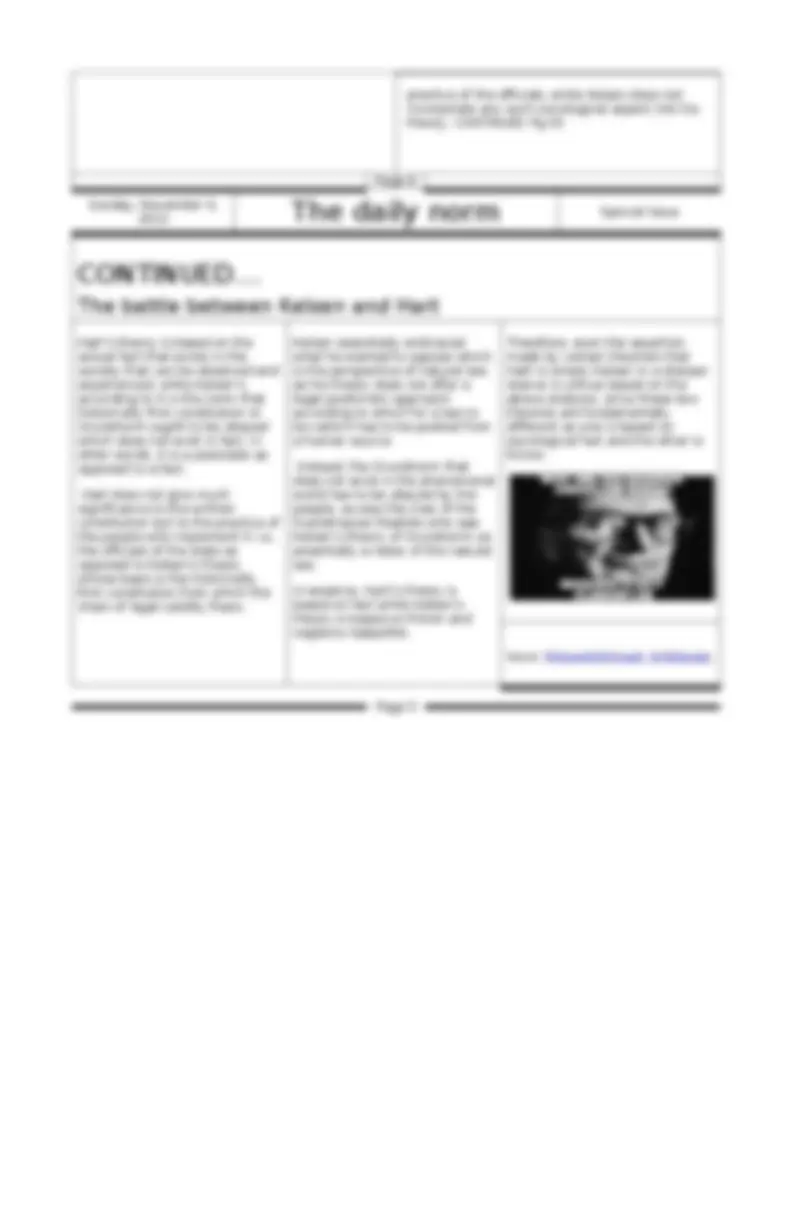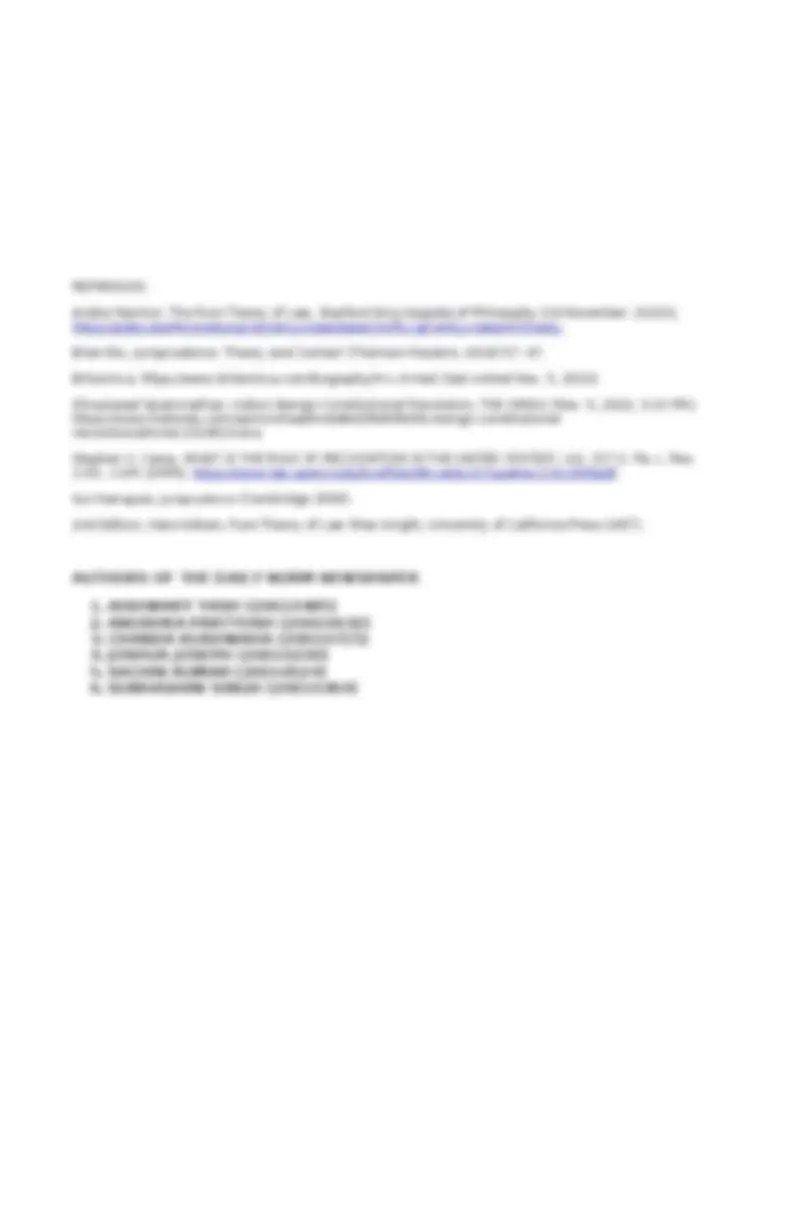







Study with the several resources on Docsity

Earn points by helping other students or get them with a premium plan


Prepare for your exams
Study with the several resources on Docsity

Earn points to download
Earn points by helping other students or get them with a premium plan
Community
Ask the community for help and clear up your study doubts
Discover the best universities in your country according to Docsity users
Free resources
Download our free guides on studying techniques, anxiety management strategies, and thesis advice from Docsity tutors
CONSTITUTIONAL LAW AND CIVIL CODE PROCEDURE
Typology: Cheat Sheet
1 / 9

This page cannot be seen from the preview
Don't miss anything!






Austrian American jurist, legal philosopher, educator, and author on international law Hans Kelsen (October 11, 1881 – April 19,
Kelsen sought to identify the distinctive features of legal systems. It was a purely theoretical description of law because it did not reduce the study of law to the level of psychology or sociology. That's what set Kelsen apart from the other Scandinavian realists. Kelsen argued that the command theorists were incorrect to view the law as the sovereign's mandate enforced by force. Why? Because if that were the case, the law and a gunman's command would be identical, but they are not. Unlike the gunman's orders, the law is normative and ought; and this ought is binding. Simply put, a valid law must be followed in the letter to be considered law. Why, then, does this obligation exist? It was legitimate because it assumed a normative framework within which legal cognition could take place. Kelsen's goal was to create a "pure theory of law," or a science of law that is detached from any moral or ethical considerations. Since morality was nothing more to Kelsen than ideology, he believed that any explanation of the normativity of law had to be divorced from morality. Then Kelsen admitted that the fundamental norm was an invention rather than a given. He argued that the dominant legal theories of the time were tainted by either an attempt to reduce law to the natural or social sciences, or by the imposition of morality and political ideology. – CONTINUED ON PG 02. Source: https://entreabogadosteveas.wordpress.com/ 2015/05/01/foto-de-kelsen-cuando-era-nino-y- ya-que-andamos-en-esas-tambien-de- carbonell/
accepted as appropriate behaviour. by a competent authority). Page 4
Sunday, November 6,
Special Issue
These rules are of two types: primary and secondary rules. The primary rules impose a certain set of duties on the people, which makes them behave in a certain way. An example of this can be seen in like this, in a game of football the main aim is to kick the ball into the other team’s goal. The rules that govern the players and match can be seen as the secondary rules. An example of this is the referee (a person appointed to enforce the rules of the game) giving a red card to a player would mean that that player has violated one of the main rules of the game. A Union of the primary and the secondary results in the formation of law. Hart also goes on to explain that the second rule is there to solve the “defects” of the primary. This is due to the primary rule being:1. Uncertain about what the law is;
Herbert Lionel Adolphus Hart (1907- 1992), popularly known as HLA Hart is one of the most influential 20th- century political philosophers. His most famous work “The Concept of Law” took British Jurisprudence by storm in the late 20th century. Hart is also known for his responses to other eminent jurist’s theories with the likes of Bentham, Austin, and Kelsen. After he graduated from the University of Oxford in 1929, he went on to practice law as a barrister. When World War II began in 1939, Hart went on to serve as part of the British intelligence service MI5. After the war, he became a professor of jurisprudence at Oxford and a fellow of University College. He also went on to serve as a principal for Brasenose College from 1973–78. Picture Caption: To make your document look professionally produced, Word provides header, footer, cover page, and text box designs that complement each other. Hart states that the law is composed of a set of rules. A rule is defined as a “ kind of complex social practice that consists of a general and regular pattern of behaviour among some group of persons, together with a widely shared attitude within the group that this pattern is a common standard of conduct to which all members of the group are required to conform. ” (^) Source: https://commons.wikimedia.org/wiki/File:H.L.A.Ha rt.jpg This rule is one of the most important rules put forward by Hart. It not only remedies the defect of “uncertainty” of the primary rule but also shows how the law is unified. For example, it is commonly known that it is illegal to drink and drive. This was made into law in Section 185 of the Motor Vehicle Act 2019 which also gives punishment for whoever drives, while still being This is known as the Regress of legal validity where the three are different laws which are enacted on the same basis. Now it can be questioned how did the foundation law, in the current case the Constitution, have the power to make secondary laws? Hart explains that it is a “social rule” which means that the foundational law gets its power from the people,
Sunday, November 6,
Special Issue Source: https://yurismuda.com/en/the-relationship-of-law-and-morality-according-to-hla-hart/
Kelsen describes the law as normative i.e., it is binding on the people and ought to be obeyed by them, he gave “the pure theory of law” which is based on this normativity and bindingness of law. According to him the legal validity of a rule is derived from the Grundnorm or the Basic Norm of the legal system to which the rule belongs. He further classified the secondary rules into three types i.e. the rule of recognition, the rule of adjudication, and the rule of change. The rule of recognition is accepted by the officials of the state as a common standard which also determines their behaviour in the official capacity, and these rules of recognition provide a test for the legal validity of a primary rule. This rule of recognition can be modified by either violent or peaceful means. This Grundnorm is the historically first constitution of the legal system and the validity of a law is traced upwards in the chain of legal validity towards the historically first constitution. This chain of legal validity is broken when a revolution or an illegal act establishes a new legal authority, and this results in ‘autochthony’ that severs the tie to the Grundnorm or the Basic Norm present at the time before it. Hart responded to Kelsen’s theory in his book “The Concept of Law” in which he rejected this Grundnorm theory of Kelsen. According to Hart, a legal positivist, the law is made up of different rules, and for a rule to have legal validity it needs to satisfy the tests as laid down by his “rule of recognition”. Hart says that the legal system comprises of primary rules which put a duty on the people to behave in a specified way (e.g. the Indian Penal Code), and the secondary rules are about the primary rules as it tells how to enforce the primary rules or how to modify them or how to execute them (like the Code of Criminal Procedure).
The rule of change allows and prescribes the procedure for amending or repealing of the primary rules. The rule of adjudication provides for the authority of the officials of the state to decide on matters where the violation or omission of the primary rules occurs. Now, the most fundamental difference between Hart and Kelsen’s theories is that while Hart incorporates in his theory the sociological aspects like the relationship between the people and the officials, and it bases the rule of recognition on the
practice of the officials, while Kelsen does not incorporate any such sociological aspect into his theory. CONTINUED Pg 05 Page 8 Sunday, November 6,
Special Issue
Hart’s theory is based on the actual fact that exists in the society that can be observed and experienced, while Kelsen’s according to it is the norm that historically first constitution or Grundnorm ought to be obeyed which does not exist in fact, in other words, it is a postulate as opposed to a fact. Hart does not give much significance to the written constitution but to the practice of the people who implement it i.e., the officials of the state as opposed to Kelsen’s theory whose basis is the historically first constitution from which the chain of legal validity flows. Kelsen essentially embraced what he wanted to oppose which is the perspective of natural law, as his theory does not offer a legal positivistic approach according to which for a law to be valid it has to be posited from a human source. Instead, the Grundnorm that does not exist in the phenomenal world has to be obeyed by the people, as was the view of the Scandinavian Realists who saw Kelsen’s theory of Grundnorm as essentially a redux of the natural law. In essence, Hart’s theory is based on fact while Kelsen’s theory is based on fiction and neglects realpolitik. Therefore, even the assertion made by certain theorists that Hart is simply Kelsen in a sharper stance is untrue based on the above analysis, since these two theories are fundamentally different as one is based on sociological fact and the other is fiction. Source: TRU/Law3020/GroupH - WikiEducator Page 5